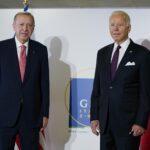The Central Bank’s Monetary Policy Committee (PPK) surprisingly cut the interest rate by 100 basis points to 12%. Thus, the bank reduced the policy rate for the second consecutive month.
TRY touched a record 18.42 versus the USD, surpassing the level reached during a full-blown currency crisis last December. It edged back to 18.36 following the sales.
The bank said in the PPK statement that leading indicators for the third quarter continue pointing to a loss of momentum in economic activity due to the decreasing foreign demand. “It is important that financial conditions remain supportive to preserve the growth momentum in industrial production and the positive trend in employment in a period of increasing uncertainties regarding global growth as well as escalating geopolitical risk,” it added.
Here is the PPK statement:
“The weakening effects of geopolitical risks on global economic activity continue to increase. Global growth forecasts for the upcoming period are being revised downwards and recession is increasingly assessed as an inevitable risk factor. While the negative consequences of supply constraints in some sectors, particularly basic food, have been alleviated by the strategic solutions facilitated by Türkiye, the upward trend in producer and consumer prices continues on an international scale. The effects of high global inflation on inflation expectations and international financial markets are closely monitored. Moreover, central banks in advanced economies emphasize that the rise in inflation may last longer than previously anticipated due to rising energy prices, imbalances between supply and demand, and rigidities in labor markets. The divergence in monetary policy steps and communications of central banks in advanced economies continue due to their diverse economic outlook. It is observed that central banks continue their efforts to develop new supportive measures and tools to cope with the increasing uncertainties in financial markets.”
“A strong growth was observed in the first half of 2022. Since the beginning of July, leading indicators have been pointing to a slowdown in growth due to the weakening foreign demand. Compared to peer economies, job creation has been stronger. Considering the sectors that contribute to the employment increase, it is observed that the growth dynamics are supported by structural gains. While share of sustainable components of economic growth increases, the stronger than expected contribution of tourism revenues to the current account balance continues. On the other hand, high course of energy prices and the likelihood of a recession in main trade partners keep the risks on current account balance alive. Sustainable current account balance is important for price stability. The rate of credit growth and allocation of funds for real economic activity purposes are closely monitored. In addition, the spread between policy rate and the loan interest rates driven by the announced macroprudential measures is closely monitored. The Committee will continue to further strengthen the tools supporting the effectiveness of the monetary transmission mechanism.”
“Increase in inflation is driven by the lagged and indirect effects of rising energy costs resulting from geopolitical developments, effects of pricing formations that are not supported by economic fundamentals, strong negative supply shocks caused by the rise in global energy, food and agricultural commodity prices. The Committee expects disinflation process to start on the back of measures taken and decisively implemented for strengthening sustainable price and financial stability along with the resolution of the ongoing regional conflict. Additionally, leading indicators for the third quarter continue pointing to loss of momentum in economic activity due to the decreasing foreign demand. It is important that financial conditions remain supportive to preserve the growth momentum in industrial production and the positive trend in employment in a period of increasing uncertainties regarding global growth as well as escalating geopolitical risk. Accordingly, the Committee has decided to reduce the policy rate by 100 basis points, and has assessed that the updated level of policy rate is adequate under the current outlook. To create an institutional basis for sustainable price stability, the comprehensive review of the policy framework continues with the aim of encouraging permanent and strengthened liraization in all policy tools of the CBRT. The credit, collateral and liquidity policy actions, of which the review process is finalized, will continue to be implemented to strengthen the effectiveness of the monetary policy transmission mechanism.”
“The CBRT will continue to use all available instruments decisively within the framework of liraization strategy until strong indicators point to a permanent fall in inflation and the medium-term 5 percent target is achieved in pursuit of the primary objective of price stability. Stability in the general price level will foster macroeconomic stability and financial stability through the fall in country risk premium, continuation of the reversal in currency substitution and the upward trend in foreign exchange reserves, and durable decline in financing costs. This would create a viable foundation for investment, production and employment to continue growing in a healthy and sustainable way.”
“The Committee will continue to take its decisions in a transparent, predictable and data-driven framework. The summary of the Monetary Policy Committee Meeting will be released within five working days.”










